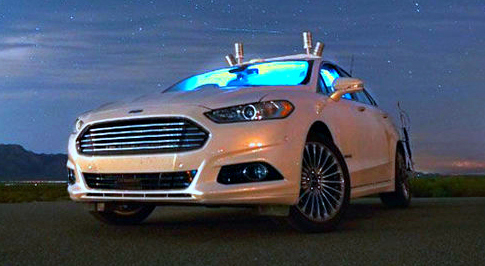Ford's self-driving cars can see in the dark

Ford has released a video showing one of its autonomous test cars driving itself along an unlit road at night with no headlights.
Although the test car – a US version of the Ford Mondeo – did have a human “minder” in the backseat of the vehicle, the vehicle was effectively driving itself without any direct human input.
Ford’s driverless vehicles use 3D maps and lidar technology, a method of measuring distance and detecting obstacles by using laser beams. Around 3 million lidar pulses are sent out a second, which are then relayed with the 3D maps in order for the vehicle to determine its position. This combination means that they can effectively see in the dark without needing to use cameras or headlights.
Jim McBride of Ford’s autonomous vehicles divison stated that “thanks to lidar, the test cars aren't reliant on the sun shining, nor cameras detecting painted white lines on the asphalt. In fact, lidar allows autonomous cars to drive just as well in the dark as they do in daytime."
Ford has said previously that they expect to be able to offer autonomous vehicles to the public by 2020.